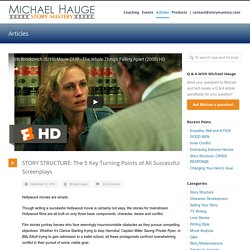

The Turning Point: Perfecting The Look of "The Grand Budapest Hotel" Any film that reaches a wide audience is the end result of countless choices by a broad range of players. The Turning Point is a series that examines the critical creative decisions made during the making of a film, and how they helped shape the eventual end product. In this edition, we check in with Adam Stockhausen, production designer on The Grand Budapest Hotel who also worked with director Wes Anderson on Moonrise Kingdom and The Darjeeling Limited. The detail-rich sets always distinguish a Wes Anderson movie.
Every room aboard Steve Zissou's ship in The Life Aquatic is its own world in miniature, and every part of the house in The Royal Tenenbaums is awash in revealing residue from the characters who inhabit them. The Location Decision My first conversations with Wes are sort of broad, raw discussions about the nature of the script and where we’re going to shoot. Ideas Evolve and Grow--Even "Miniature" Ones Plan to Allow For Changes In Plans [Images courtesy of Fox Searchlight] : Soap Operas Around the World. SCREENPLAY STRUCTURE. Hollywood movies are simple.

Though writing a successful Hollywood movie is certainly not easy, the stories for mainstream Hollywood films are all built on only three basic components: character, desire and conflict. Film stories portray heroes who face seemingly insurmountable obstacles as they pursue compelling objectives. Whether it’s Clarice Starling trying to stop Hannibal, Captain Miller Saving Private Ryan, or Billy Elliott trying to gain admission to a ballet school, all these protagonists confront overwhelming conflict in their pursuit of some visible goal. Plot structure simply determines the sequence of events that lead the hero toward this objective.
And here’s the good news: whether you’re writing romantic comedies, suspense thrillers, historical dramas or big budget science fiction, all successful Hollywood movies follow the same basic structure. In a properly structured movie, the story consists of six basic stages, which are defined by five key turning points in the plot. Avatars of Story - Marie-Laure Ryan. Television Script Format. It's important to remember that there is no hard and fast standardization.

Each show has its own idiosyncrasies. There are some things, however, that remain consistent in all teleplays whether drama or sitcom. The goal here is to give you an idea of what those are. If you want to write for television, you must do your homework. Learn about the show you wish to write a spec for. Format and story structure are precise when it comes to episodic television. Television is like a factory. Network TV is no longer king. The most important thing to remember here is that drama is conflict. One-Hour Drama In addition to the above, start your scenes late and get out early. Types There are a few different kinds. The procedural, which consists of shows such as the Law and Order franchise and the CSI franchise, Next are the shows that deal with lawyers and politics. Format One-hour shows are formatted like features, except for the act breaks. Interactive TV narratives.
Film Theory Goes to the Movies. Interactive TV narratives. Mediatizaciones. Conversaciones fragmentadas en la red (I) Aviso a los navegantes: este es un post fragmentado.

Puro zapping construido a partir de algunas conversaciones sobre la mediatización, quizá uno de los conceptos fundamentales para entender la vida social desde finales del siglo XX. Ya hemos hablado del tema en este blog, aunque de forma mucho más lineal y coherente (ver la reseña de La Semiosis Social 2 de Eliseo Verón que escribí el año pasado). Si bien Verón lleva los orígenes de la mediatización a la prehistoria en este post me centraré en cosas que pasan aquí y ahora, del lado de allá y del lado de acá.
Perfiles Hace una semana colgué en Facebook el siguiente post: Más adelante se interna en las teorías de la mediatización y explica que “para los reconocidos Francesco Casetti y Roger Odin, ‘la neotelevisión arrasa con la oposición entre información (realidad) y entretenimiento (ficción)’.(…) Pero ya se habla de hipertelevisión y postelevisión. Si les interesa en este link pueden leer el editorial completo de Fontevecchia en Perfil.